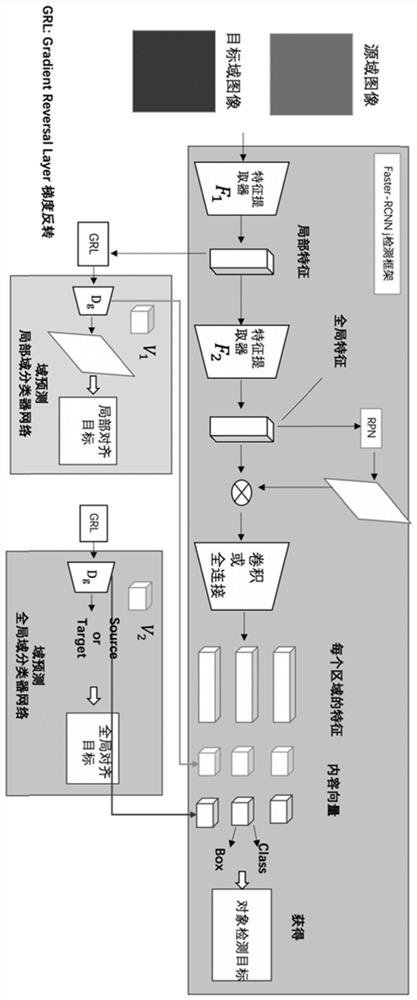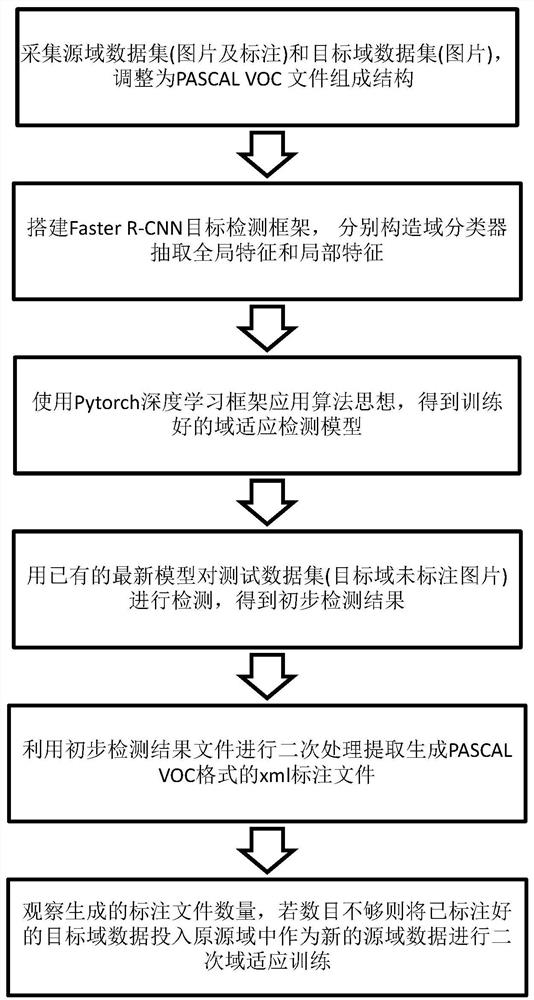Automatic image labeling method based on unsupervised domain adaptation
A technology for automatic image labeling and domain supervision, which is applied in the fields of machine learning and computer vision, and can solve problems such as time cost and labor cost
- Summary
- Abstract
- Description
- Claims
- Application Information
AI Technical Summary
Problems solved by technology
Method used
Image
Examples
Embodiment
[0089] This embodiment includes the following parts:
[0090] Step 1, the collection of source domain and target domain datasets.
[0091] The source domain is generally an open source data set or a data set preserved by previous workers. Generally speaking, the acquisition rate is relatively high, and the scale is relatively complete, and the usability is high; the target domain data set is the focus of attention, and the target domain data The set has only images but no corresponding labeled data. After obtaining it, adjust and organize it into a general PASCAL VOC data set form (xml file: folder, filename, size, etc. tags), and put it in the source folder and the target folder respectively for backup.
[0092] Step 2, domain adaptation algorithm framework construction.
[0093] (1), Faster R-CNN framework. First, the input image is represented as a tensor (multidimensional array) of Height×Width×Depth, and after the pre-trained CNN model is processed, a convolution featu...
PUM
 Login to View More
Login to View More Abstract
Description
Claims
Application Information
 Login to View More
Login to View More - R&D
- Intellectual Property
- Life Sciences
- Materials
- Tech Scout
- Unparalleled Data Quality
- Higher Quality Content
- 60% Fewer Hallucinations
Browse by: Latest US Patents, China's latest patents, Technical Efficacy Thesaurus, Application Domain, Technology Topic, Popular Technical Reports.
© 2025 PatSnap. All rights reserved.Legal|Privacy policy|Modern Slavery Act Transparency Statement|Sitemap|About US| Contact US: help@patsnap.com



